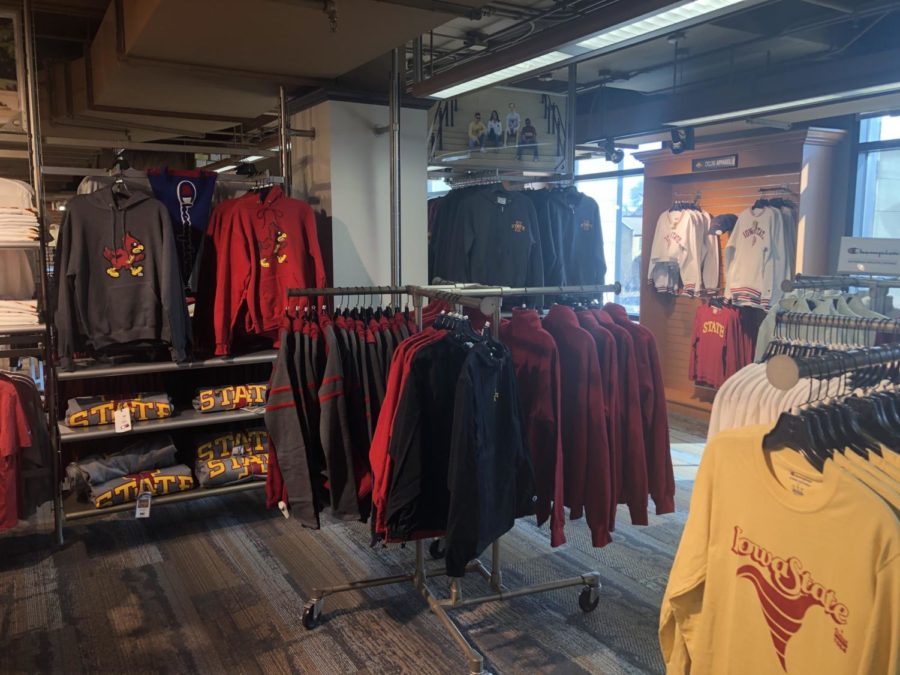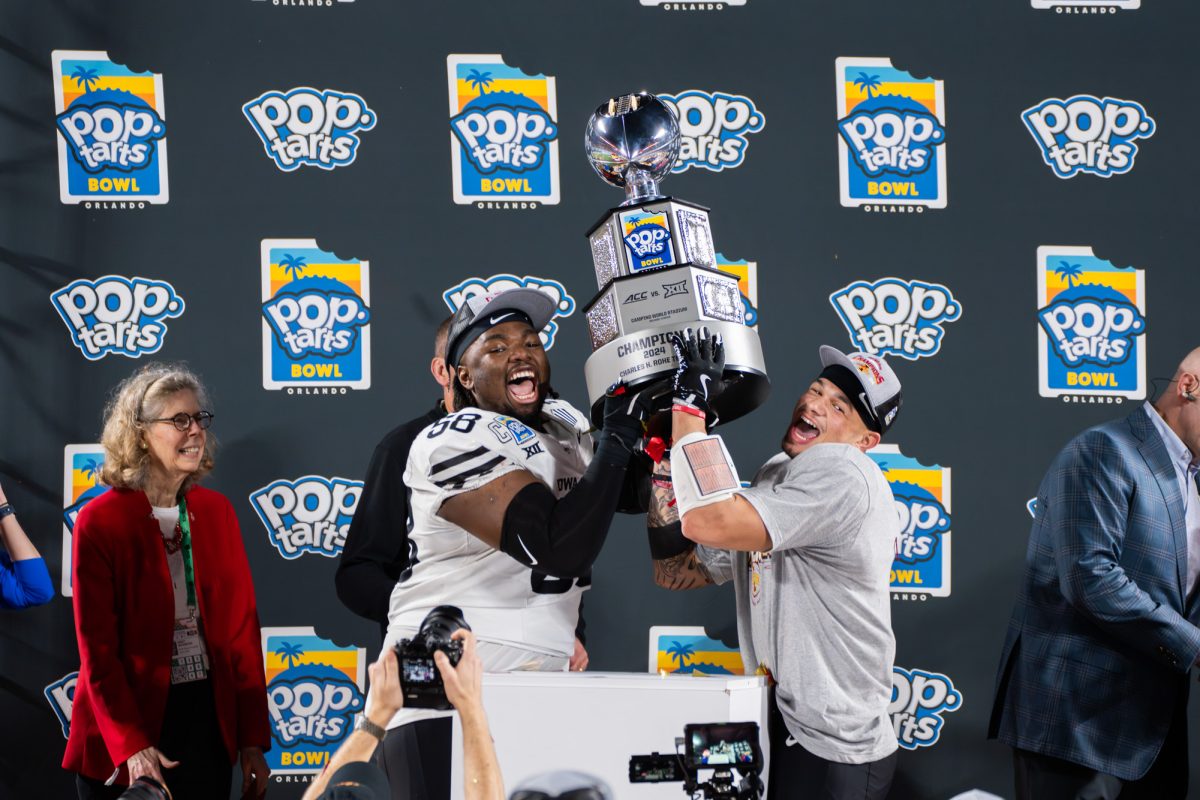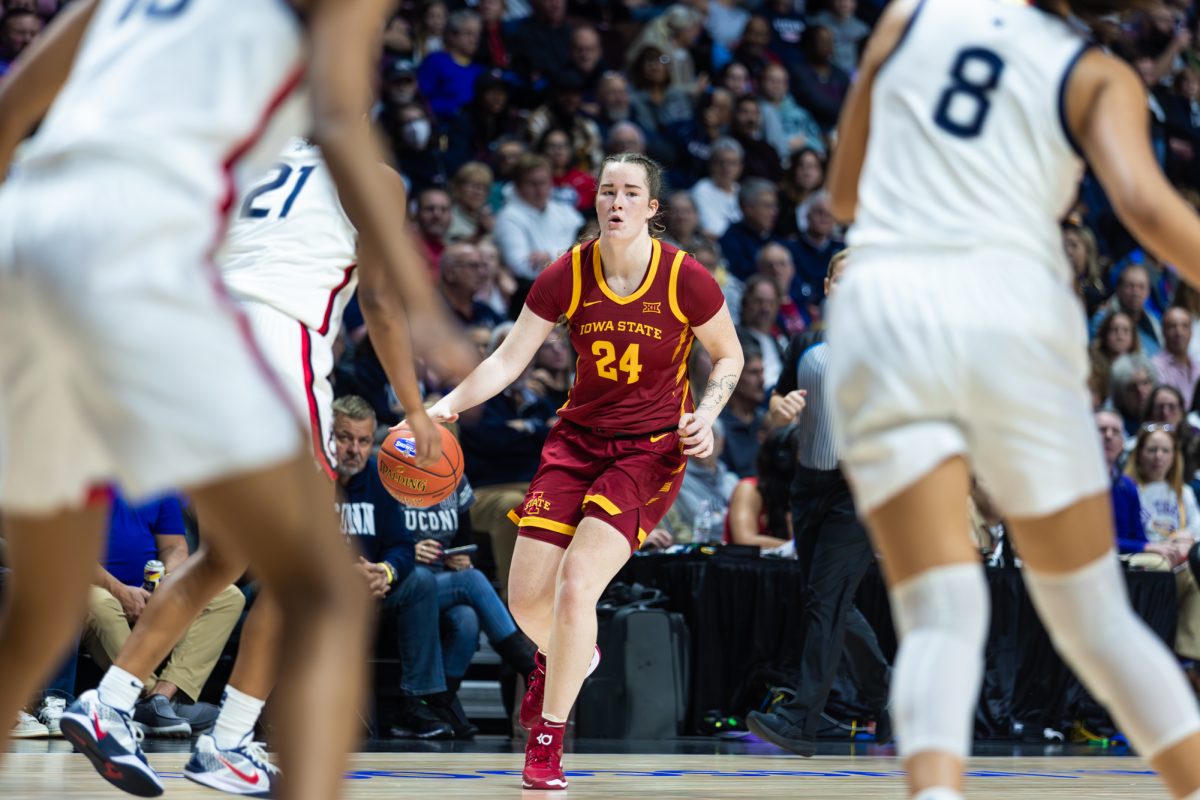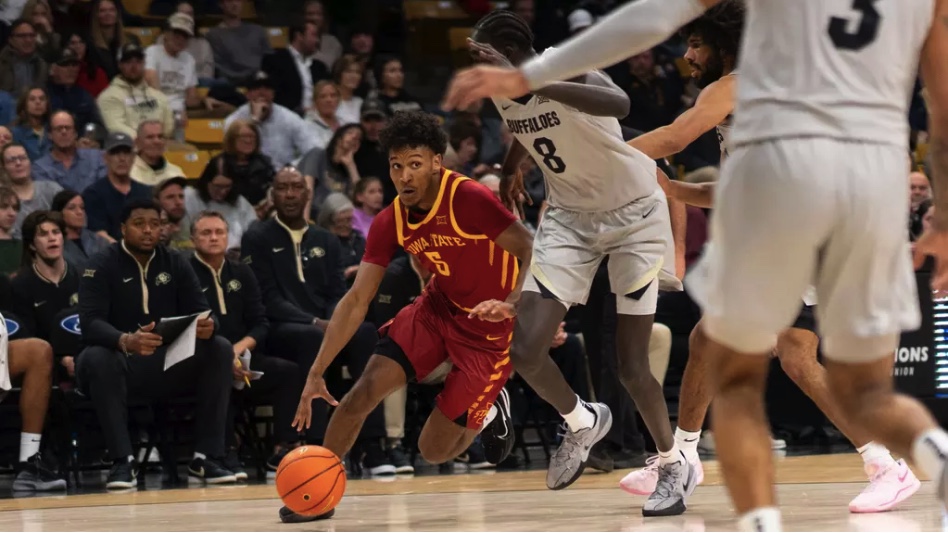Iowa State Bookstore provides wide range of clothing sizes
March 10, 2020
When looking at clothing sizes, finding the right size can be an issue for many people. The Iowa State Bookstore has been working to fix these issues through working with the community.
“People are always welcome to call with suggestions,” said Sadie Anderson, the apparel buyer for the bookstore. “People call with suggestions all the time. One guy just emailed in this morning wanting a gold polo in a [quadruple extra-large].”
Anderson said that although she was not able to fulfill that request because the Iowa State Bookstore does not sell gold polos due to poor sales, she does keep a log of all requested items so that when she gets ready to place an order she can look back at customer requests to see what she can help provide to the community.
She said customers will always get some kind of response from their staff, whether it is a “yes we can help you” or that they are unable to.
“Ultimately we are here to serve the university,” said Gayle Mastbergen, assistant manager of marketing for the bookstore. “We are a service to the university, we are not for profit. Of course, students are our customers, but we also run the alumni store so that opens up a range of customers as well. Our students, faculty, staff, our fans and our alumni are who we cater to.”
Mastbergen said the bookstore tries to aim for the middle and serve as many people as they can, but there will always be outliers that they also try and serve the best they can.
Anderson said the bookstore sells a wide variety of clothing types, in both men’s and women’s styles as well as infant, toddler and youth sizes.
“We have everything from your basic T-shirts, short-sleeved T-shirts, long-sleeve T-shirts, sweatshirts, crewnecks, hooded sweatshirts, we have youth apparel, we have men’s and women’s, we have outdoor apparel, we have dressier options, we have polos, we have cardigans,” Anderson said.
Anderson said that like most other clothing retailers, clothes come in and out of season, so some things may not be available year-round or may only be in stock for special events, and sizes of these items may be limited if customers come later into the sale of those items.
The Iowa State Bookstore is more than a “plus one model,” which means it buys from a variety of retailers for its clothing, not just one or two.
“We buy from multiple people,” Anderson said. “There are a couple local screen print and embroidery companies that we use here in town. I purchase a lot from Hanes corporation, which is Champion, Under Armour. We are a Nike sideline school so we buy from Nike, we also buy from BCS. A lot of our dressier men’s clothes come from Antigua Clothing.”
Matt Laurich, retail manager for the bookstore, said the number of retailers the bookstore purchases from fluctuates.
“There is the core that Sadie talked about and then we like to have the ability to if she is at a show or we find something and we want to try to bring it in, ‘okay let’s bring in company xyz and let’s see how it works.’ If it does, do they replace somebody? If it doesn’t, fine, we tried and we know, let’s move on. You have to always be willing to try those things to see if you can make things better.”
Due to the number of retailers the bookstore purchases from, sizing may not all be the same from company to company, but it is then Anderson’s job to find a way to balance those differences.
“Just like sizing anywhere you go, a small in this brand is not a small in this brand so it is nice to be able to flux your size run per vendor because you kind of know that this brand typically runs bigger or smaller,” Anderson said.
Though the differences in clothing sizes per brand may be there, Anderson said she tries to have a wide range of options available.
“For women’s, we run an extra small to [double extra-large] and then we have plus one, plus two and plus three,” Anderson said. “The plus sizes, when we order from a vendor, we have to hit a certain number before we are able to buy a certain item. For the plus sizes, we are very limited in what our vendors offer us so I really try if it is a good piece to bring in the plus sizes of because I know we have a market for it.”
Anderson clarified that not every piece in the bookstore comes in extra small and not every piece comes in plus size; most women’s pieces come in small to double extra-large.
“When it comes to the male/unisex pieces, generally I can buy small through [triple extra-large] in most things,” Anderson said. “We do have some things I am able to buy extra small, which I have bought more extra-small in unisex especially in the past couple months because we are seeing a trend where college-age girls are shifting toward the unisex pieces instead of women-specific pieces.”
Anderson also said there are specific cases where she can buy up to quadruple extra-large and quintuple extra-large sizes in some things. She is also able to buy extra-large talls, double extra-large talls and triple extra-large talls, but she said the tall pieces are from very specific vendors.
Though there are a wide range of sizes available, not all sizes are available in the same number as other items, such as sizes on the extra-large end or extra-small end being limited.
“I do feel like we have a broad range that goes across the board, with that being said with our ordering system online we have to have a certain number of each size for our system to recognize it as ‘in stock’ because we don’t want to oversell, so a lot of those times we may have two or three pieces in each size but our system may not recognize us as actually having it in stock.”
Anderson said that when this happens people are interested in certain sizes that may read as “out of stock” can call into the bookstore to check if there are items available in those sizes.
“By all means come talk to us about anything,” Laurich said. “If there is a demand out there and we hear about it, then we will make some changes or do what we can.”
Though Anderson, Laurich, Mastbergen and all the staff at the Iowa State Bookstore do their best to provide the Iowa State community with the best options they can with clothing, not every retailer does, and that is part of something called “thin privilege.”
“Size privilege, sometimes referred to as thin privilege, is a byproduct of a culture’s belief that the thin body is the norm and thus the acceptable and preferable body,” said Amanda Arp, a graduate student in English. “It refers to how people with thin or thinner bodies receive the benefits of being thin in a society that rewards and is built for thin individuals. On the other hand, people with fat, thick or large bodies can often experience detrimental effects due to being on the less privileged side of size privilege, such as body shaming.”
Arp said thin privilege can affect people of different sizes in different ways.
“For example, a slim or average individual could go into almost any clothing store and find sizes that would fit him or her. A person with thin privilege could be unaware that they benefit from said privilege,” Arp said. “In contrast, those on the less privileged end of size privilege, typically those with fatter or larger bodies, can experience sizeism in the form of other people commenting that he or she should lose weight, not buy certain foods or not wear revealing clothing. Size privilege can also impact access to certain experiences, for instance flying in economy seating, wearing certain uniforms, riding a roller coaster at a theme park or going to a movie where the seats don’t move. Due to the prevalence of such situations, people who do not benefit from size privilege sometimes have to plan their lives to avoid or account for restrictive situations.”
Arizona State University has created a “Thin Privilege Checklist” based on an article written by Sharon Ridgway in Feminism Magazine. The list allows people who aren’t sure what thin privilege is to check themselves against a list that portrays examples of size discrimination.
Arp said that thin privilege does happen at Iowa State, even if it is not always noticeable at first.
“According to the ongoing results of the research study that my research partner, Cassidy Boe, and I have been doing, I would say that size privilege is sometimes a factor at Iowa State,” Arp said. “For instance, some flip-style desks with limited area between chair and desk are inaccessible or uncomfortable for someone with a larger or fatter body.”
Arp said thin privilege can also go beyond just desks and seating, but also into clothing, like those sold at the Iowa State Bookstore.
“Clothes range in size and stores range in the sizes of clothes that they carry,” Arp said. “The larger and fatter that an individual is, the more restricted their options are for clothing. People who are tall, short, curvy or are extremely thin can also sometimes have accessibility issues due to the clothing size that they need.”
Arp said thin privilege in clothing can look like not being able to get the size you need. She provided the example of a student needing a triple extra-large or a quadruple extra-large T-shirt, but the only sizes that exist are small, medium, large, extra-large, and double extra-large.







